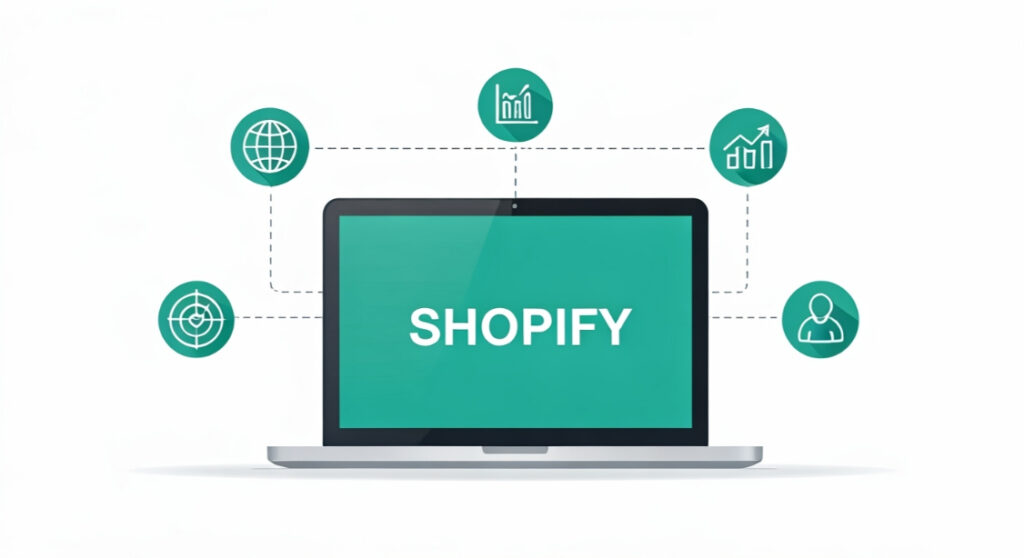Lightspeed to Shopify: A Complete Migration Guide


Thinking about migrating from Lightspeed to Shopify? This guide covers everything you need for a smooth transition, from planning to execution, ensuring your eC
Lightspeed to Shopify: A Complete Migration Guide
Is Shopify the Right Move for Your Business?
- What are the biggest pain points with my current Lightspeed setup?
- What functionalities are missing that Shopify offers?
- How important is a seamless omnichannel experience (combining online and offline sales)?
- What is my budget for a new eCommerce platform, including ongoing fees and potential app costs?
Planning Your Migration: Laying the Foundation for Success
1. Data Audit and Preparation
- Products: Categorize your products, check descriptions, images, and pricing. Identify any outdated or irrelevant items that you can archive.
- Customers: Clean up your customer database. Remove duplicates, update contact information, and segment your customers for targeted marketing campaigns later on Shopify.
- Orders: Analyze your order history to identify trends, popular products, and customer behavior. This data will be invaluable for optimizing your Shopify store.
- Categories and Collections: Map your existing Lightspeed categories to Shopify collections. Consider reorganizing your product structure for better navigation and SEO on Shopify.
- Blog posts and Pages: Determine which blog posts and static pages (e.g., “About Us,” “Contact Us”) you want to migrate to Shopify.
- Discount Codes: Document all your active discount codes, their expiration dates, and usage restrictions.
2. Choose a Shopify Plan
- Transaction fees
- Staff accounts
- Reporting capabilities
- Advanced features (e.g., gift cards, abandoned cart recovery)
3. Select a Shopify Theme
- Mobile responsiveness: Ensure the theme looks great on all devices.
- Customization options: Can you easily customize the theme to match your brand?
- Loading speed: A fast-loading theme is crucial for user experience and SEO.
- Features: Does the theme offer built-in features like product filtering, quick view, and wishlists?
4. App Selection and Integration
- Marketing automation
- Email marketing
- Product reviews
- Customer support
- Inventory management
5. Domain Name Strategy
6. Establish a Timeline and Assign Responsibilities
The Migration Process: Step-by-Step Guide
1. Export Data from Lightspeed
- Products
- Customers
- Orders (if needed for historical analysis)
2. Import Data into Shopify
3. Configure Your Shopify Store
- Setting up payment gateways: Choose your preferred payment gateways (e.g., Shopify Payments, PayPal, Stripe) and configure them to accept payments.
- Configuring shipping settings: Set up your shipping rates, shipping zones, and shipping carriers.
- Setting up taxes: Configure your tax settings to comply with local regulations.
- Creating collections: Organize your products into collections for easy navigation.
- Setting up navigation menus: Create clear and intuitive navigation menus to help customers find what they’re looking for.
4. Customize Your Theme
- Uploading your logo
- Changing colors and fonts
- Adding images and banners
- Customizing the layout of your product pages and homepage
5. Install and Configure Apps
6. Test, Test, Test!
- Testing the checkout process: Place test orders to ensure the checkout process is smooth and error-free.
- Testing payment gateways: Verify that payments are being processed correctly.
- Testing shipping rates: Ensure that shipping rates are being calculated accurately.
- Testing all website functionality: Click through all pages, links, and buttons to ensure everything is working as intended.
- Testing on different devices and browsers: Test your store on different devices (desktop, mobile, tablet) and browsers (Chrome, Firefox, Safari) to ensure it’s displaying correctly everywhere.
Post-Migration: Launching and Optimizing Your Shopify Store
1. Launch Your Store
2. Monitor and Optimize
- Website traffic
- Conversion rate
- Average order value
- Bounce rate
3. Focus on Marketing and Customer Acquisition
- Search engine optimization (SEO)
- Social media marketing
- Email marketing
- Paid advertising
- Content marketing